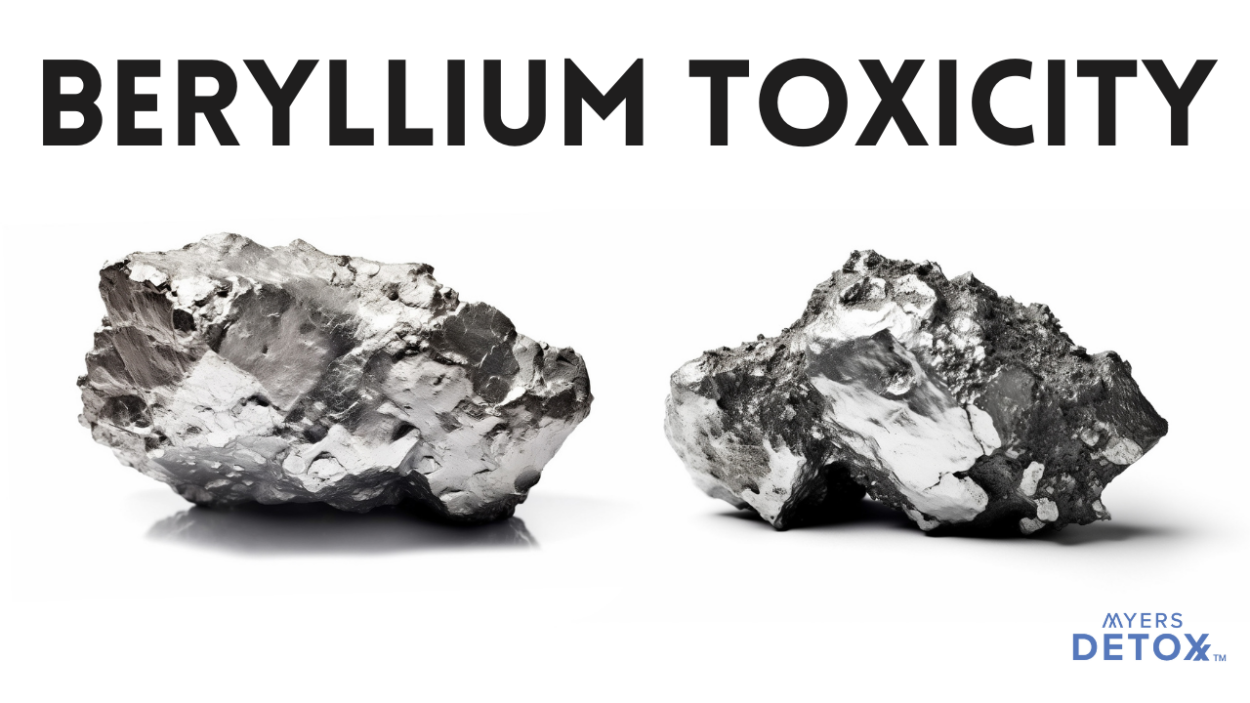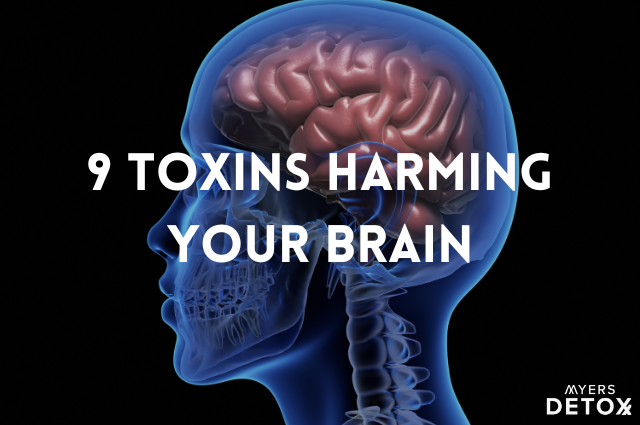Beryllium toxicity doesn’t make headlines, but this heavy metal does affect some people and I wanted to bring it to your awareness. In fact, beryllium was first identified as a health hazard in the 1930s, and its use is still widespread today[1].
Although workplace safety initiatives have decreased the amount of beryllium that workers come into contact with, it’s estimated that between 21,200 to 800,000 US workers were exposed to beryllium between the 1970s and 1980s. Today, that estimate is still as high as 134,000. And as is true for all other heavy metals, this toxin does not leave your body easily[2].
That means that if you ever worked around beryllium in the past, it could still be impacting your health today.
Furthermore, along with many other toxic substances, beryllium is still released into our environment with the combustion of fossil fuels. Once in the environment, beryllium does what most toxic compounds do… it contaminates our air, water, and food supply.
This puts the general public at risk as small amounts of beryllium can be found in our soil, waterways, and air[3].
Sources Of Beryllium
Due to its widespread use, beryllium can be found in a range of industries and products, including[4]:
- Car ignitions
- Anti-lock brake systems
- Nuclear weapons
- Missiles
- Dental crowns and bridges
- X-rays
- Computers
- Microwaves
- Electro-medicals devices
- Optical systems
- Bicycles
- Golf clubs
- Satellites
- Space telescopes
Symptoms of Beryllium Exposure
Symptoms of beryllium exposure can vary depending on the route of exposure (external, inhalation, or through consumption of food or water). Some of the most common symptoms of exposure include[4][5][6][7]:
- Cough
- Shortness of breath
- Asthma
- Fatigue
- Chest pain
- Heart Palpitations
- Fever
- Decreased appetite
- Unexplained weight loss
- Dermatitis
- Beryllium ulcers
- Dermal granuloma on hands, arms, and chest
- Night sweats
Possible Related Health Conditions
A handful of health conditions are known to be directly related to chronic beryllium exposure. These include chronic beryllium disease, lung cancer, granulomatous hepatitis, and kidney stones[8].
Chronic Beryllium Disease
Chronic beryllium disease (CBD) impacts workers in industries where beryllium is present in the air and on surfaces. In most cases, chronic exposure is the result of inhalation, but physical contact can also cause toxic exposure.
Chronic beryllium disease (CBD) occurs when, over time, beryllium exposure results in an immune response that leaves the individual sensitive to beryllium. This sensitivity creates an obstructive lung disorder which results in scarring of lung tissue and, ultimately, a loss of quality of life and, in some cases, decreased life expectancy[9].
Lung Cancer
The International Agency for Research on Cancer (IARC) classifies beryllium as a Group 1 carcinogen (carcinogenic to humans), and the National Toxicology Program (NTP) lists beryllium as a known human carcinogen[10].
Furthermore, based on numerous studies, OSHA (Occupational Safety and Health Administration) has determined that exposure to beryllium may cause lung cancer in humans[8].
Granulomatous Hepatitis
Exposure to beryllium has been associated with a liver condition called granulomatous hepatitis. Granulomatous hepatitis is a type of liver injury characterized by the presence of clusters of immune cells (macrophages, lymphocytes) around an area of inflammation.
Eventually, these granulomas may progress to fibrosis and, eventually, liver cirrhosis[11]. This is a fatal condition.
Kidney Stones
Another complication of beryllium exposure is kidney stones. Kidney stones are small, hard deposits that form in the kidneys and can be very painful to pass. The connection between beryllium and kidney stones may be due to beryllium inducing hypercalcemia, increasing the amount of calcium moving through your blood and kidneys[12].
Other Potential Complications
In addition, animal trials have shown that high levels of beryllium are associated with[13]:
- Enlarged heart
- Kidney failure
- Liver cell degeneration
- Underdevelopment of organs
- Emphysema
- Inflammation of lung tissue
- Lymph node hyperplasia
- Rickets
- Intestinal ulcerations
- Testicular atrophy
- Underdeveloped bone marrow
- Allergic dermatitis
How Do You Know If You’ve Been Exposed To Beryllium?
As mentioned, the people that should be most concerned about beryllium exposure are those that work directly with this heavy metal or in operations that could release beryllium into the environment.
While you may think that would account for only a small population, beryllium is widely used in a range of industries, including the automobile industry, electronics, aerospace, and many more.
So, how can you be sure whether or not you have toxic levels of beryllium in your body? The best way to assess is through a Hair Tissue Mineral Analysis (HTMA).
HTMA testing will measure heavy metal and mineral concentrations in your hair, which is one of the most common places heavy metals like to hide. By assessing the metal content in your hair, you get an accurate snapshot of what’s happening inside your body without having to draw any blood or go to a lab for sampling. In fact, HTMA is so easy and non-invasive you can do it right from the comfort of your own home.
Furthermore, with an HTMA test, you’ll receive comprehensive data about all heavy metal activity in your body. From here, you can schedule a call with a trained practitioner to go over your results and get yourself started on a detoxification protocol that’s tailored to exactly what your body needs at this time.
How To Detox Beryllium
If you find that you have beryllium toxicity, there are a handful of helpful nutrients and compounds that can help you detox and be free of this heavy metal.
DMPS (dimercaptopropane-sulfonic acid) is an effective chelating agent for detoxing heavy metals. DMPS goes to work quickly, and within 24 hours up to 80% of the freely available compound can be excreted (mainly via the kidneys, with some excretion through bile)[14].
Glutathione is an antioxidant that has a high affinity for heavy metals – helping to neutralize these unwanted compounds in your body, while assisting in their removal. Unfortunately, one side effect of heavy metal toxicity is the depletion of this crucial antioxidant as it gets used up while trying to combat heavy metal toxicity. This is why glutathione is an excellent supplement to take while you’re detoxing – particularly for heavy metal detox[15].
Natural Vitamin E is also key to help recycle glutathione. I like Annato-E by Designs for Health. I take this personally.
Selenium is a mineral that plays a role in glutathione synthesis, and has been studied for its ability to specifically combat the impact of beryllium on your body[16].
EDTA is another chelating agent that’s helpful in targeting and removing beryllium via the liver, kidneys, and lungs. As a chelator, EDTA has powerful binding properties that allow it to scavenge and and eliminate heavy metals – relieving your body from their toxic burden[17].
Takeaway
Heavy metal toxicity is not something that anyone should take lightly. Although you may be taking action to steer clear of metals like lead, aluminum, and mercury, lesser-known toxins like beryllium can pose just as much of a threat – and they often go under the radar. This is especially true if you currently work in an industry that deals with beryllium.
If you have any concerns about your exposure to this toxic metal, order an HTMA today to learn exactly what’s happening inside your body. I have seen beryllium on a number of tests and those patients were very grateful that they had done a test and detected this outlier metal in their toxicity profile. They now had the knowledge of what was contributing to their symptoms and exactly how to remove it.









